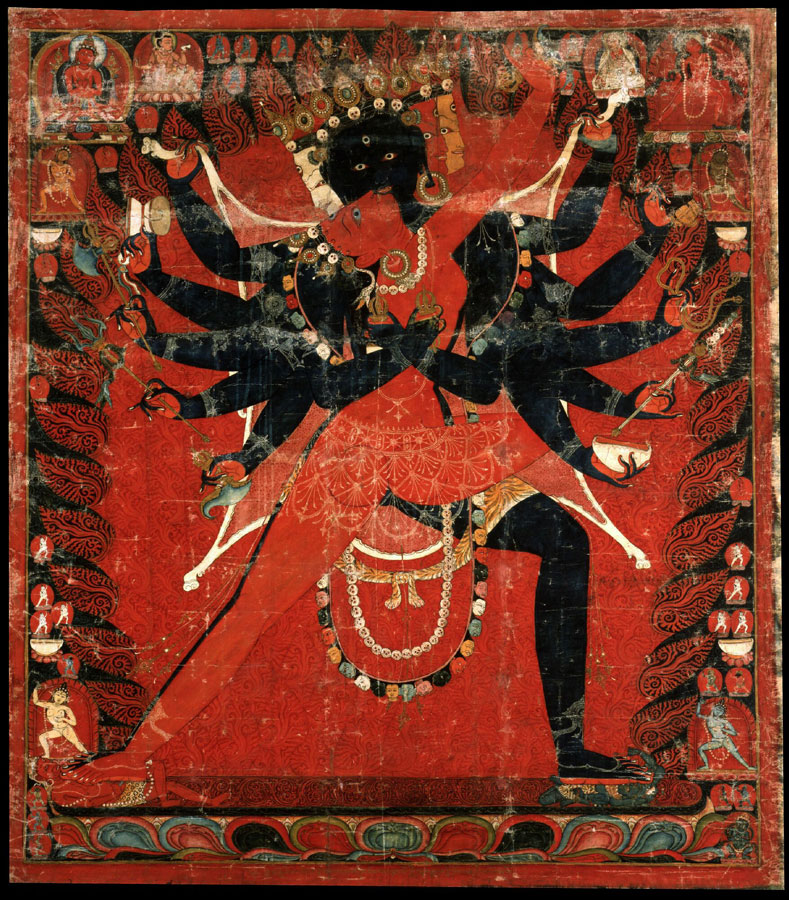previous image | Marvels of the Malla Period main exhibition | next image
Chakrasamvara and Vajravarahi Embracing |
Chakrasamvara is a highly revered yidam (personal mentor deity) in Tibetan Vajrayana Buddhism. He has four heads and twelve arms, two of which embrace his consort Vajravarahi. Both figures hold objects that symbolize the transformative powers of Tibetan Vajrayana Buddhism. In one of his six left hands, Chakrasamvara wields a noose to harness all ego and negativity that prevent progress toward enlightenment. In one of his right hands, he holds a long-handled ax to sever the root of ignorance that generates negativity. In her right hand, Vajravarahi grasps a chopper, an implement that represents "wisdom-consciousness" and that symbolically cuts defilement and disillusionment at the root. Engulfed in an aureole of red flames, these deities are joined in yab-yum (Tibetan for "father-mother pose"), a sexual and spiritual union representative of one of the highest practices in Vajrayana Buddhism. They stand on an ornate lotus pedestal, under which a Tibetan inscription gives the name of the patron and the purpose for commissioning this painting-the spiritual benefit of all beings. Click here to view full image (1753 × 2000 pixels, 1.04 MB) all text & images © The Philadelphia Museum of Art |
previous image | Marvels of the Malla Period main exhibition | next image

